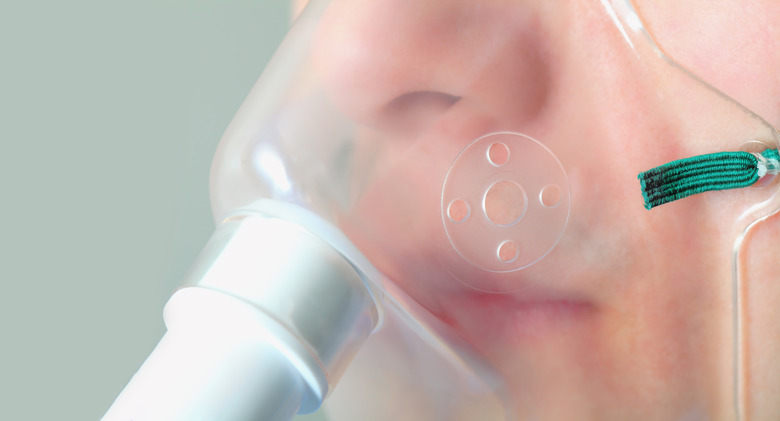Minimum Oxygen Concentration For Human Breathing
Humans need oxygen to live, but not as much as you might think. The minimum oxygen concentration in the air required for human breathing is 19.5 percent. The human body takes the oxygen breathed in from the lungs and transports it to the other parts of the body via the body's red blood cells. Each cell uses and requires oxygen to thrive. Most of the time, the air in the atmosphere contains the proper amount of oxygen for safe breathing. But at times, the level of oxygen can drop due to other toxic gases reacting with it.
Normal Air Composition
Normal Air Composition
Each time you take a breath, you inhale more than oxygen. The normal air in our environment consists of a few different gases. Approximately 78 percent of the air is nitrogen gas while only about 20.9 percent is oxygen. The remaining fraction is made up of primarily argon gas, but trace amounts of carbon dioxide, neon and helium are also present.
Safe Oxygen Levels
Safe Oxygen Levels
For humans and many animals to sustain normal functions, the percentage of oxygen required to sustain life falls within a small range. The Occupational Safety and Health Administration, OSHA, determined the optimal range of oxygen in the air for humans runs between 19.5 and 23.5 percent.
Not Enough Oxygen: Side Effects
Not Enough Oxygen: Side Effects
Serious side effects can occur if the oxygen levels drop outside the safe zone. When oxygen concentrations drop from 19.5 to 16 percent, and you engage in physical activity, your cells fail to receive the oxygen needed to function correctly. Mental functions become impaired and respiration intermittent at oxygen concentrations that drop from 10 to 14 percent; at these levels with any amount of physical activity, the body becomes exhausted. Humans won't survive with levels at 6 percent or lower.
Too Much Oxygen: Side Effects
Too Much Oxygen: Side Effects
Higher-than-normal oxygen levels aren't as harmful to life, but there is an increased change of fire or explosion risk. With extremely high concentrations of oxygen in the air, humans can experience harmful side effects. Very high levels of oxygen cause oxidizing free radicals to form. These free radicals attack the tissues and cells of the body and cause muscle twitching. The effects from short exposure can most likely be reversed, but lengthy exposure can cause death.
Altitude Sickness
Altitude Sickness
The right amount of oxygen starts at sea level. When altitude is increased, such as driving or climbing up a mountain, there is less atmospheric pressure. Lower pressure allows air to expand more than it does at sea level. While the ratio of the oxygen and nitrogen in the air remains the same, less molecules are available within the same space. Each breath you take at a higher altitude contains less oxygen molecules than breathing at a lower altitude. This can cause altitude sickness. Most people afflicted with altitude sickness experience nausea, headache and fatigue. Without proper treatment, the problem can become more serious.
References
- Natural Center For Atmospheric Research & UCAR Office Of Programs: What's In The Air?
- Pure O2: What Is Oxygen?
- Universal Industrial Gases, Inc.: Air: Its Composition and Properties
- Industrial Scientific: Oxygen Information
- Altitude.org: Altitude Sickness
- McDonagh Medical Center: Is Oxygen Toxic In These High Doses?
Cite This Article
MLA
Malesky, Mallory. "Minimum Oxygen Concentration For Human Breathing" sciencing.com, https://www.sciencing.com/minimum-oxygen-concentration-human-breathing-15546/. 9 March 2018.
APA
Malesky, Mallory. (2018, March 9). Minimum Oxygen Concentration For Human Breathing. sciencing.com. Retrieved from https://www.sciencing.com/minimum-oxygen-concentration-human-breathing-15546/
Chicago
Malesky, Mallory. Minimum Oxygen Concentration For Human Breathing last modified March 24, 2022. https://www.sciencing.com/minimum-oxygen-concentration-human-breathing-15546/
